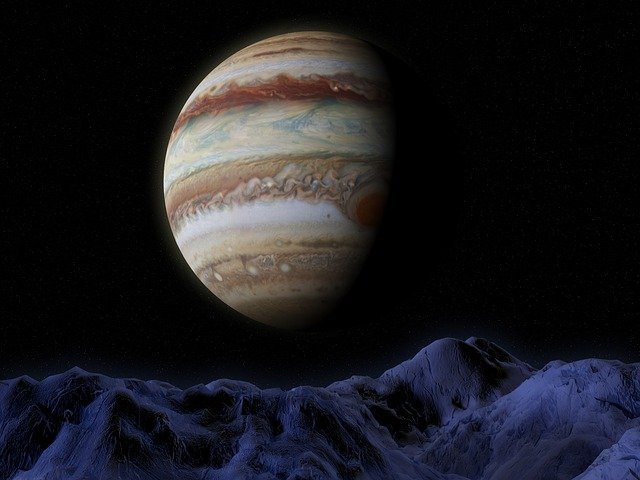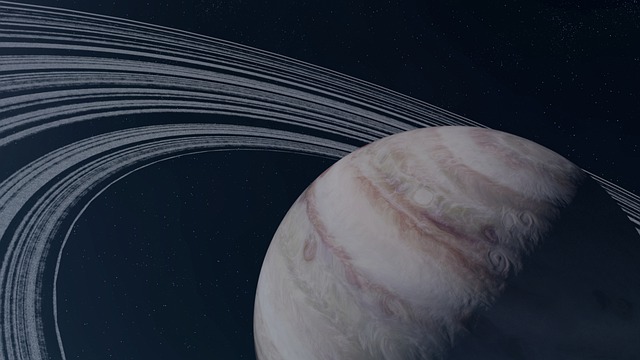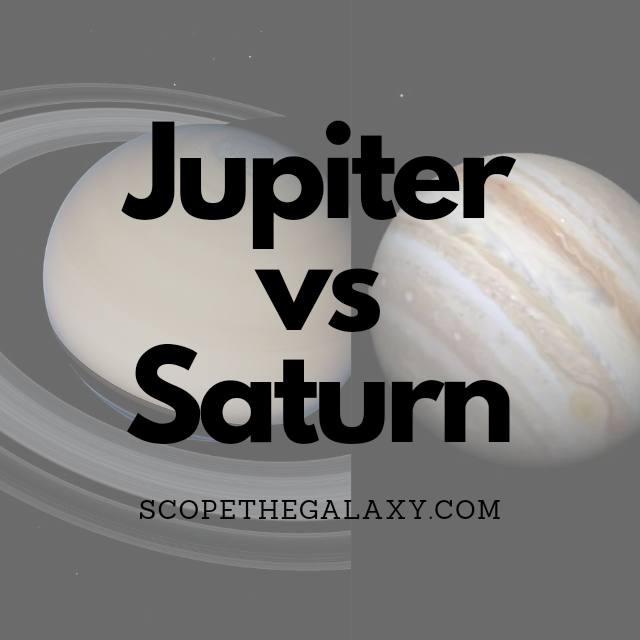*This post may contain affiliate links. This means we may make a commission if you purchase an item using one of our links*
The main differences between Jupiter and Saturn would be that Jupiter is the bigger of the two where it’s 11.5 times bigger than Earth with Saturn only 9.5 times bigger, Saturn has visible rings around its orbit, which Jupiter does not, and that Saturn has 82 moons orbiting it whereas Jupiter only has 79.
With that being said, these aren’t the only differences and, even in regards to the similarities they isn’t too much variance , at least to the same extent when comparing them to terrestrial planets like Earth, Mars, etc.
For a more thorough breakdown on these differences and similarities continue reading as that will be covered in the remainder of the article.
What Is The Planet Jupiter?
Table of Contents

Jupiter is the 5th farthest planet from the Sun and the largest planet within our local solar system. The planets most recognisable traits is the giant red spot visible on its atmosphere along with the brown horizontal bands flowing across its being.
Jupiter falls under the classification of a gas giant. This is because its composition mostly consists of the elements hydrogen and helium. The split is roughly 71% hydrogen, 27% helium, with the remainder of the elements split throughout the left over 2%.
As the biggest planet in our solar system, Jupiter is roughly 139,820 km or 1,300 Earths in diameter, it has a mass of around 0.001 solar masses, the temperature when inside the clouds are roughly -145 degrees celsius whilst the core is far hotter, equating in the region of 24,000 degrees celsius.
Due to its extreme circumstances, gaseous composition and distance from the Sun, the planet is not theoretically capable to support life, from its subzero temperature to the extremely fast 400mph winds, and its gravity which may be unsustainable for our bones, roughly 2.4 times greater than Earth’s.
Although the conditions on Jupiter aren’t suitable for us, some of its 79 moons like Europa for example could support life.
This brown giant has a relatively fast rotation around its axis where 1 rotation typically takes 10 hours to make whilst its orbit around the Sun is far longer taking in the region of 12 years for 1 full cycle.
Another feature of Jupiter that is renowned by astronomers is the strength of its magnetic field. In comparison to the other planets in our solar system it is even stronger than our Sun, where it’s over magnetosphere is roughly 20,000 times the strength of Earth.
What this means is that Jupiter’s magnetosphere is able to avert solar winds that are 3 million kilometers away from it.
What Is The Planet Saturn?

Saturn is the second largest planet in our solar system, that has a multitude of rings surrounding its gaseous exterior. It’s also the 6th farthest planet from the Sun.
As Saturn falls under the gas giant moniker, the planet is mostly made up of gases. However, Saturn’s composition is a little different from Jupiter’s where its atmosphere is mixture of hydrogen and ices containing elements of Ammonia.
It’s core on the other hand is comprised of a dense core of nickel and iron, which is then surrounded by rocks compressed so strongly that it can tends to reach scorching hot temperatures of 11,700+ degrees celsius.
On the other hand, It’s gaseous atmosphere is far cooler. The exterior generally sits in the extreme sub zero range where Saturn’s temperatures is -138 degrees celsius.
This is generally constant throughout the yellow ringed giants day to day. In fact it’s much colder than even the coldest place on Earth, which would be Eastern Antarctic Plateau, Antarctica that hits -94 degrees Celsius, which is more than 40 degrees celsius warmer.
Being so large, Saturn’s gravitational pull is obviously strong. That’s why over it’s 4.5 billion years of existence, beyond its rings this yellow gas giant has managed to accumulate 82 different moons along with other smaller interstellar debris that now orbit it.
In fact it’s largest moon Titan is literally bigger than one of the 8 planets orbiting the Sun, Mercury.
Saturn also orbits the Sun but, as the 6th farthest planet from it, it does mean a singular orbit will take it 29.4 Earth years to complete. In comparison to its axial orbit which only takes 10.7 hours, this is an extremely long time.
Similarities Between Jupiter And Saturn
Both are gas based entities , both orbit the Sun, and both entities have a cold atmosphere and a scorching hot core.
Even when it comes to how long it takes for a full cycle around their axis, it’s around the 10 – 11 hour mark for both.
Differences Between Jupiter And Saturn
The differences between these two gas giants include the following:
- Saturn is a constant pale yellow in color whereas Jupiter has horizontal stripes that are dark and light brown.
- Jupiter orbits the sun every 10 years whilst Saturn only orbits the Sun every 29.4 years.
- Jupiter is 11.5 times the size of Earth whereas Saturn is smaller at only 9.5 times Earth’s size.
- Jupiter only has 79 moons whilst Saturn has 82 moons.
- Saturn has very visible rings around its orbit whilst Jupiter does have rings but, they’re not visible as it’s only constructed with smaller dust particles.
- Jupiter is the largest planet in our solar system whilst Saturn is the second largest.
- Saturn is comprised mostly of hydrogen and ices with elements of ammonia whilst Jupiter is made of helium and hydrogen.
- Jupiter’s magnetic field is far stronger than Saturn’s
- Jupiter is almost twice as dense as Saturn.
Summary
These two gas giants are amongst the most recognisable celestial objects in the night sky, and although in many ways, differ significantly in a number of other areas whether it be their overall density, their size, orbital cycle and so forth.
In the end of the day, both are still gas giants, extremely large, and can even be spotted relatively easily if you have the right gear, whether it be with a pair of binoculars or a telescope. In short both are fascinating in their own right, which is why astronomers have continued to study them despite how far they are from our little blue planet.

